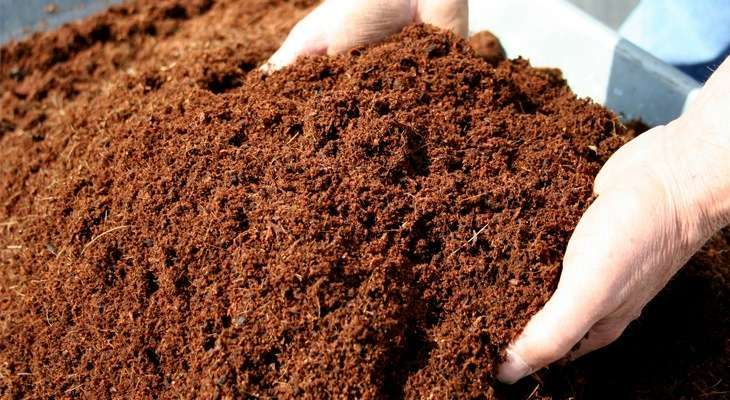🔥 What is Cocopeat and How Do You Use It?
coconusaindo
7/15/20253 min read


In the world of gardening and horticulture, cocopeat is quickly becoming a go-to choice for growers seeking sustainable and effective planting media. Whether you're a seasoned gardener, a commercial grower, or just starting out, understanding cocopeat can significantly boost your success.
A recent study by Aminullah, Indarwati, & Haryanta (2025) explored cocopeat's potential as a growing medium for water spinach microgreens when enriched with NPK fertilizer and eco-enzyme. Their research highlights the versatility and benefits of this natural material in modern agriculture.
🌿 What Exactly Is Cocopeat?
Cocopeat, also known as coco coir or coconut fiber dust, is a natural byproduct derived from the husk of coconuts. Once considered waste, coconut husks are now processed to extract fibers for various industrial uses, leaving behind the fine, spongy material that is cocopeat.
It's a fantastic alternative to traditional soil, offering unique properties that make it highly desirable for hydroponics, container gardening, and even soil amendment.
✅ Key Benefits of Using Cocopeat
Based on various studies and practical applications, cocopeat offers several compelling advantages:
Excellent Water Retention: Cocopeat can hold up to 8-9 times its weight in water, meaning your plants stay hydrated longer, reducing the frequency of watering. This is a significant benefit for water-efficient gardening.
Good Aeration: Despite its water-holding capacity, cocopeat provides excellent air porosity, ensuring roots get enough oxygen to prevent rot and promote healthy growth. This dual quality makes it an ideal growing substrate.
Neutral pH: Cocopeat typically has a neutral pH (around 5.5 to 6.5), which is suitable for a wide range of plants. This reduces the need for extensive pH adjustments.
Disease Resistant: It's naturally resistant to many soil-borne diseases and pests, offering a cleaner start for your plants.
Sustainable & Renewable: As a byproduct of the coconut industry, cocopeat is an incredibly eco-friendly and renewable resource, aligning with sustainable gardening practices.
Lightweight: Its light weight makes it easy to handle and transport, especially for large-scale operations or indoor gardening setups.
🪴 How to Use Cocopeat Effectively
Using cocopeat is straightforward, but a few key steps ensure optimal results:
Hydration is Key: Most cocopeat comes in compacted bricks. Before use, you need to rehydrate it. Place the brick in a large container and gradually add water. It will expand significantly, often 5-7 times its original volume. For example, a 5 kg brick can yield up to 75 liters of ready-to-use cocopeat.
Rinsing (Optional but Recommended): Some cocopeat may have residual salts, especially if sourced from coastal areas. Rinsing it thoroughly until the runoff water is clear can help prevent salt buildup, which is crucial for sensitive plants.
Mixing with Nutrients: Cocopeat is naturally low in nutrients. Therefore, you must add fertilizers or nutrient solutions for plant growth. The study by Aminullah et al. (2025) highlights the importance of NPK fertilizer and eco-enzyme to enhance its effectiveness as a planting medium.
For container plants: Mix cocopeat with perlite or vermiculite for drainage, and then incorporate a slow-release granular fertilizer or use liquid feeds regularly.
For seed starting: Cocopeat's fine texture makes it excellent for seed germination. You might use it pure for initial sprouting, then transplant into a more enriched mix.
For hydroponics: Cocopeat serves as an excellent inert medium that requires precise nutrient delivery through a hydroponic nutrient solution.
As a Soil Amendment: You can also mix cocopeat into heavy clay soils to improve drainage and aeration, or into sandy soils to increase water retention, enhancing overall soil health.
📈 Cocopeat's Growing Market Potential
As the world shifts towards more sustainable agricultural practices and eco-friendly products, the demand for cocopeat continues to rise. Its benefits for urban farming, greenhouses, and commercial horticulture make it a valuable commodity for global buyers and agricultural suppliers. Its role in reducing waste and promoting efficient resource use solidifies its position as a future-ready gardening solution.
💬 Conclusion
Cocopeat stands out as a superior and sustainable growing medium compared to many traditional alternatives. Its remarkable water retention, aeration, neutral pH, and eco-friendly origins make it an excellent choice for a diverse range of gardening and agricultural applications. Incorporating cocopeat into your planting strategy can lead to healthier plants, more efficient resource use, and a smaller environmental footprint.
📌 Reference
Aminullah, A., Indarwati, I., & Haryanta, D. (2025). Cocopeat Study with the Addition of NPK Fertilizer and Eco Enzyme as a Planting Medium for Water Spinach Microgreens. Journal of Applied Plant Technology, Vol. 4(1). DOI:10.30742/v3ansq16
🚀 Ready to Elevate Your Garden with Cocopeat?
Are you a gardener seeking a superior and sustainable growing medium? Or a commercial grower looking for a clean, efficient, and eco-friendly alternative for your plants?
💼Coco Nusa Indo is here to connect you directly with vetted local producers in Indonesia—no hassle, no middlemen. As a neutral and trusted independent broker, we help you source better, faster, and more reliably.
🔗 Get in touch today at www.coconusaindo.com and let us help you find the best cocopeat straight from the source.
🌱 Transforming agricultural waste into thriving gardens.
Our social media
Connecting local producers with global markets.
Contact us
Email Us
Coconusaindo © 2025. All rights reserved.
